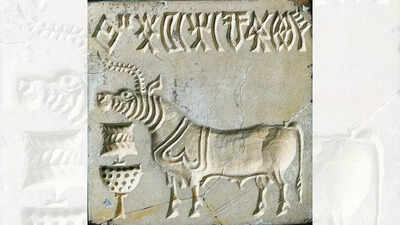- News
- Science News
- 4,000-year-old Indus script enigma waiting to be decoded: Will AI unlock the ancient mystery?
4,000-year-old Indus script enigma waiting to be decoded: Will AI unlock the ancient mystery?
The Indus Valley Civilization's script remains undeciphered despite scholarly efforts and modern AI attempts. Tamil Nadu's Chief Minister has offered a $1 million reward for cracking the code, reigniting interest. The script presents significant challenges due to its short, fragmented inscriptions. AI shows promise in identifying patterns but struggles with full translation, keeping the ancient riddle unsolved.
The Indus Valley Civilization is one of the world's oldest urban societies and is still mysterious, attracting scholars and enthusiasts to uncover its secrets. Among all its mysteries, perhaps the most mysterious aspect of this civilization is its undeciphered script. It has baffled experts for over a century. No linguist, archaeologist, or even a modern researcher with the aid of machine learning has managed to unlock the meaning behind these symbols. This mystery has stirred not only serious scholarly attempts but also sensational claims by amateur codebreakers. Recent trends, including massive money promised to anyone who can crack the code, only fuel this quest to open the secrets of this ancient society.
According to Mr Rao, a Hwang Endowed Professor at the University of Washington and author of peer-reviewed studies on the Indus script also known as Harappan script, claims that they have solved the mystery and consider the case "closed", according to a BBC report.
Harappan script and the ongoing struggle to decipher its meaning
For more than a century, scholars-linguists, scientists, and archaeologists-are futilely trying to decipher the Indus script. There are lots of theories stating it to be connected with early Brahmi scripts, Dravidian and Indo-Aryan languages, Sumerian, etc; in fact, theories saying that it is all a collection of political or religious symbols.
Can AI finally crack the 4,000-year-old Indus script?
For over a century, the Indus script has been an enigma for archaeologists and linguists alike. Scholars have tried innumerable times to decipher the meaning of this ancient writing system from the Indus Valley Civilization (IVC), but the script's meaning remains unknown. According to ‘The Archaeologist’ now, artificial intelligence (AI) is being considered as a possible solution, bringing hope for finally solving this ancient riddle. Could AI be the breakthrough that finally unlocks the secrets of this lost civilization?
Tamil Nadu CM announces a prize of $1 million to solve the 4,000-year-old mystery of the Indus script
The challenge of decoding the Indus script has gained fresh momentum thanks to a $1 million reward offered by M.K. Stalin, the Chief Minister of Tamil Nadu, India. This prize underscores the significance of the script, which is believed to have connections to Dravidian languages. Stalin’s announcement has reignited interest in the script, spurring both scholarly efforts and public enthusiasm in the quest to uncover its meaning.
Challenges in the decipherment of Indus script
Deciphering the Indus script is an extremely challenging exercise, even with AI assistance according to the reports. Researchers are trying to solve a puzzle with the minimum pieces of data—even many of these pieces appear to be partially incomplete and fragmented. The script occurs on some 4,000 known inscriptions, mostly on small seals. These inscriptions tend to be extremely short, offering very little linguistic context. Unlike the Egyptian hieroglyphs, which were deciphered by help of the bilingual artifact known as the Rosetta Stone, there were no such comparative texts for the Indus script. These problems—few inscriptions, no multilingual references, and short texts—have made the Indus script one of the greatest riddles in the history of the quest of the language.
AI's role in decoding the Indus script and its potential challenges
AI holds much promise for cracking this ancient enigma. Machine learning algorithms are already being used to analyze patterns within the symbols of the Indus script. Computer scientist Rajesh PN Rao and Nisha Yadav from the Tata Institute of Fundamental Research have already made much progress using AI in identifying structured sequences within the script. Despite these advances, the critical challenge remains: interpreting what these patterns mean. Do the symbols represent whole words, sounds, or parts of sentences? While AI has proven invaluable in identifying recurring patterns and structures, it still cannot fully translate the symbols into a readable language. When combined with traditional archaeological research, however, AI holds the potential to yield insights that were previously unattainable.
Also Read | James Webb Space Telescope captures breathtaking image of a newborn HH 30 star taking shape

About the Author
TOI Science DeskEnd of Article
FOLLOW US ON SOCIAL MEDIA

